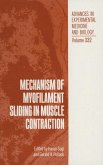Please note that the content of this book primarily consists of articles available from Wikipedia or other free sources online. The Bowditch Effect is an autoregulation method by which myocardial contractility increases with an increase in heart rate. Also known as the Treppe phenomenon or Treppe effect. One of the explanations is the inability of the Na+/K+-ATPase to keep up with influx of sodium at higher heart rates. When a higher heart rate occurs, for example due to adrenergic stimulation, the L Type Calcium channel has increased activity. The 3Na+/Ca++ exchanger (which allows 3 Na to flow down its gradient in exhange for 1 Ca++ ion to flow out of the cell) works to decrease the levels of intracellular calcium. As the heart rate becomes more robust and the length of diastole decreases, the Na+/K+-ATPase which removes the Na+ brought into the cell by the Na/Ca exchanger does not keep up with the rate of Na influx.
Bitte wählen Sie Ihr Anliegen aus.
Rechnungen
Retourenschein anfordern
Bestellstatus
Storno








